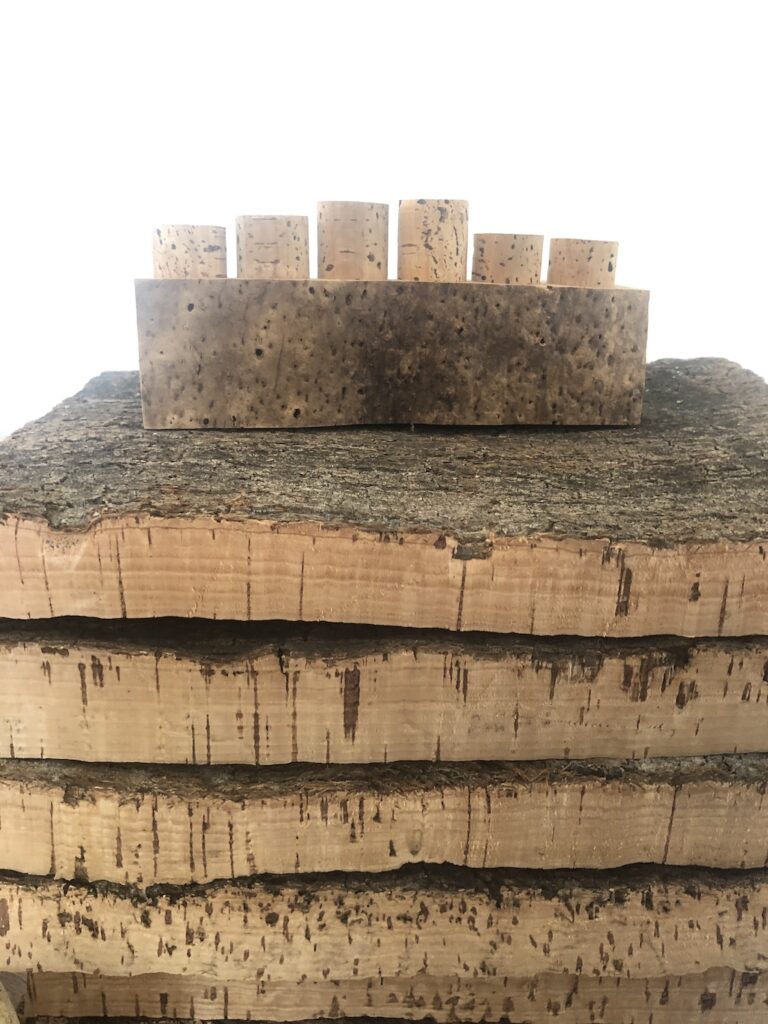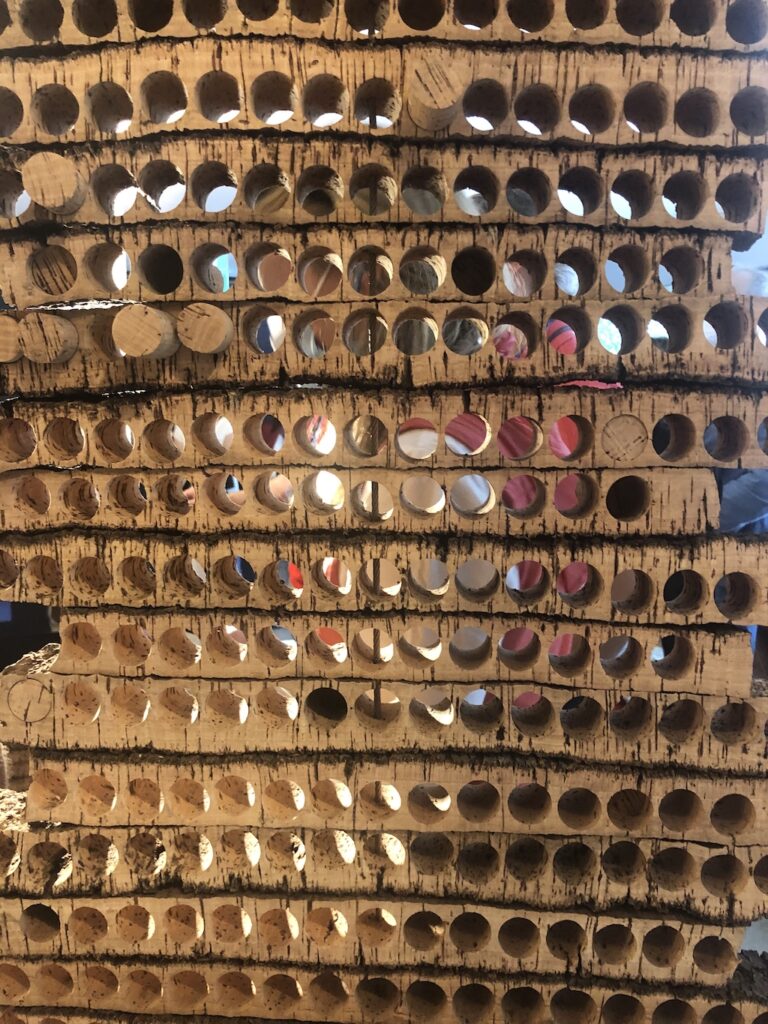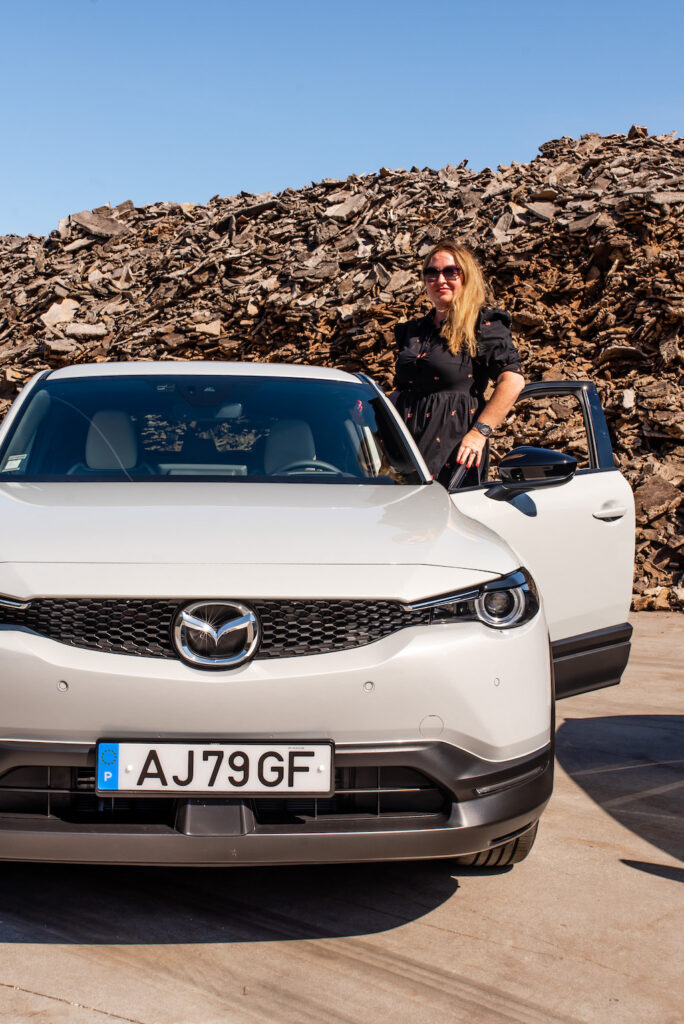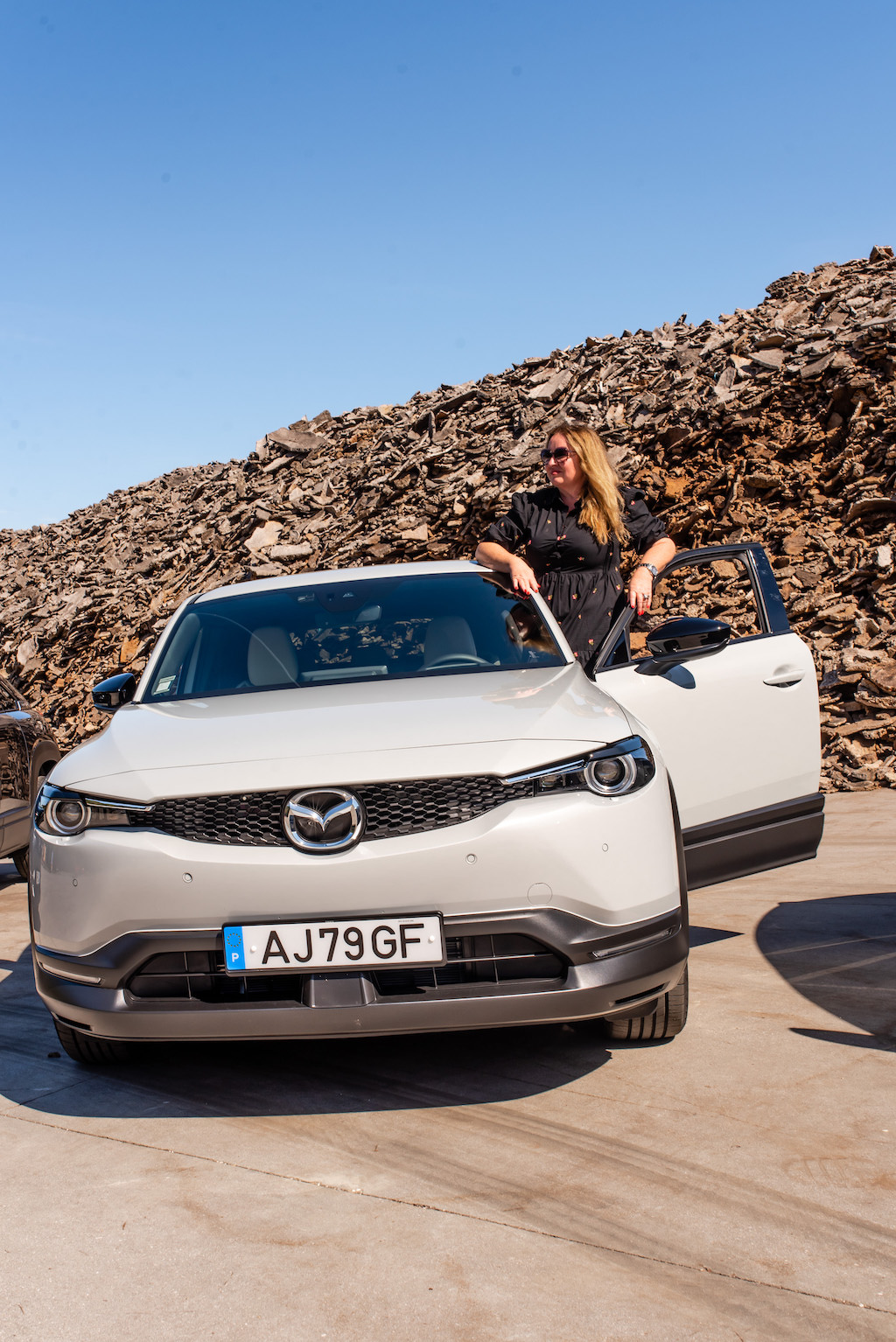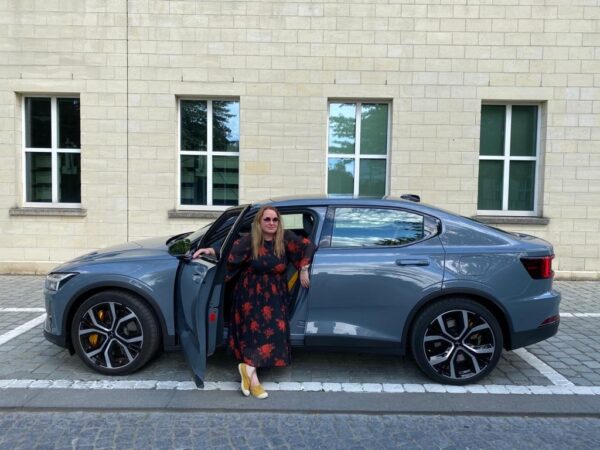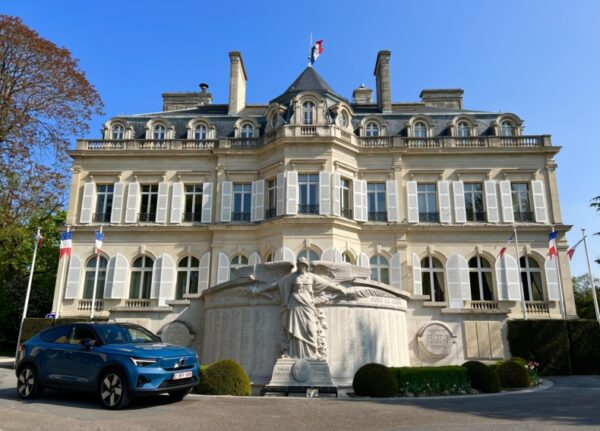One hundred years ago, Mazda started its activities as a supplier of natural cork to industrial companies in the Hiroshima area and beyond under the name ‘Toyo Cork Kogyo’. To celebrate its centenary, cork seemed to the Japanese car manufacturer to be a more than appropriate material to use in its very first electric car, the Mazda MX-30. But that was not the only reason as we discovered in the Douro Valley.
“Reducing CO2 emissions and working towards a more sustainable future is one of the most important challenges facing our world today,” said Matthias Sileghem, Vice President Customer Experience at Mazda Motor Europe. “Mazda is committed to achieving full carbon neutrality in all its operations – yes, right down to sales – by 2050. Electrification will play a vital role in achieving that goal, but we are convinced that more than one path must be taken to reduce CO2 emissions and ultimately achieve climate neutrality. Different customer needs and market conditions influence the choice of the solution will be the right one for a specific region. Is the electricity still generated from fossil fuels or already from renewable natural sources, such as solar or wind energy? Is the infrastructure for the widespread adoption of Battery Electric Vehicles (BEVs) available everywhere and for everyone? Not all situations require the same solution and pure electric solutions are not always more carbon neutral than their combustion engine counterparts. Especially when we look not just at the exhaust emissions, but at the overall well-to-wheel process, from the extraction of raw materials to production and energy generation, it becomes clear that the situation is not as black and white as it may seem. For example, battery production releases huge amounts of CO2, while the widespread use of lithium and cobalt would further deplete already precarious natural resources. In contrast, under the right conditions, an internal combustion engine can be almost completely carbon neutral – after all, it is not the engine itself that produces carbon dioxide, but the fuel it burns. All this has prompted Mazda to offer multiple solutions. We believe that, at least for the foreseeable future, combustion engines will still power the majority of cars when it comes to individual mobility on a global scale. Efficient and clean combustion engines will not only improve environmental performance in regions where e-mobility is not yet feasible in the near future, but also offer the opportunity to accelerate the process towards cleaner mobility worldwide.”
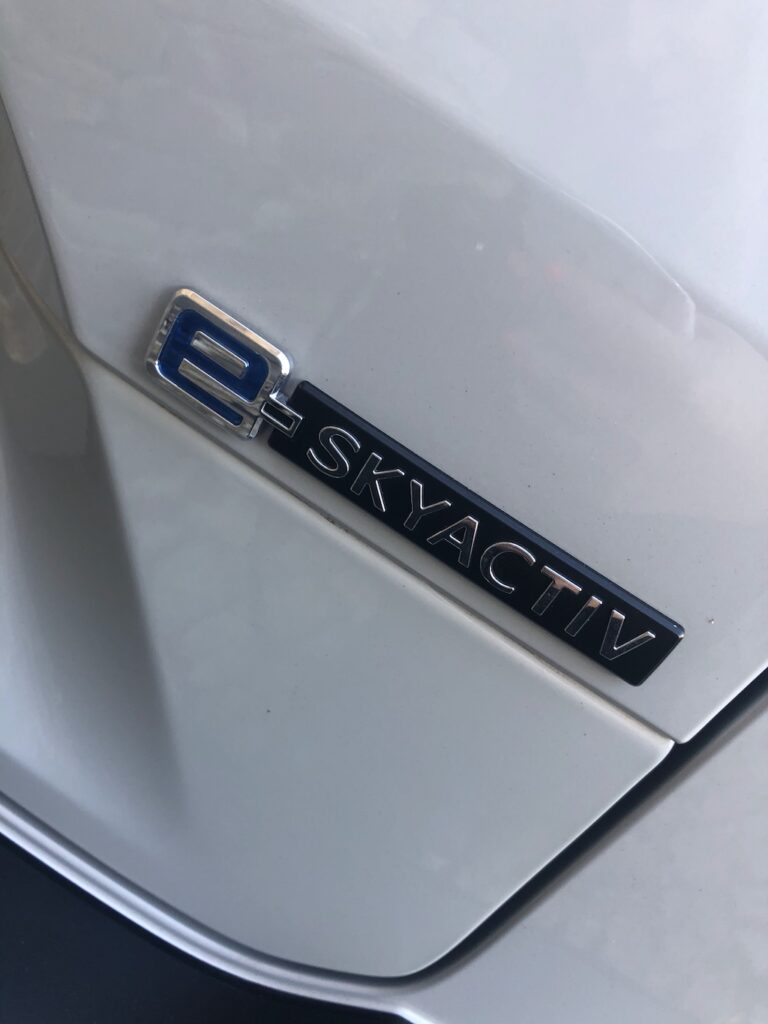
“With its Skyactiv technology, Mazda is striving for the ideal internal combustion engine”, said Matthias. “Alternative liquid fuels, such as e-fuels, are another important step towards carbon neutral mobility and make it possible to make combustion engines completely carbon neutral. These e-fuels are produced on the basis of CO2 that is recycled from the atmosphere and when they are used, the same amount of CO2 is emitted as was recycled, so completely CO2 neutral. The cool thing is that these fuels can also be used for the existing fleet, so we can drastically reduce emissions in one go and we do not have to wait for the moment when EVs, insofar as they already run on clean energy, will make up the entire fleet. The minds of policy makers are starting to ripen: the government agreement of the new German coalition explicitly states that cars with a combustion engine that run entirely on e-fuels will be considered CO2 neutral cars and can therefore continue to be commercialized after 2035 as CO2 neutral cars. A good reason to keep looking for the ultimate combustion engine in addition to developing full electric powertrains.”
We went to Cortica Amorim – the largest cork producer in the world and also Mazda’s – located in the Portuguese Douro Valley.

“Mazda was the first car manufacturer to join the eFuel Alliance in that context in early 2021”, said Matthias Sileghem. “This initiative, which brings together organizations and other stakeholders, aims to promote the development and use of renewable and low-carbon fuels. This includes synthetically produced CO2-neutral liquid e-fuels based on hydrogen, as well as innovative biofuels that are extracted from algae, for example. They represent a possible interim solution as we make the transition to BEVs.”

By 2030, every new Mazda model will have some degree of electrification. The first step in that direction is the Mazda MX-30, the brand’s first all-electric vehicle that, from interior design to the e-Skyactiv powertrain, perfectly captures what Mazda means by a holistic approach to sustainability. Mazda deliberately opted for a rightsizing strategy: a smaller battery than the competition resulting in a smaller CO2 backpack. Because the bigger the battery, the more CO2 emissions are needed for its production. And it is just the battery that is responsible for the biggest contribution to a BEV’s overall carbon footprint. The new electric drive technology is equipped with a 35.5 kWh lithium-ion battery with a range of 200 km (WLTP). That is enough for everyday use. This smaller battery also keeps the total vehicle weight low, which improves the handling and maneuverability of the vehicle. In short, the small battery offers an optimal balance between driving pleasure and results in a small carbon footprint over the entire life cycle of the car.
Cork in the car interior, vegan leather based on cactus and fuel from algae? Mazda courageously goes ahead with new forms of sustainability. But it does not participate in the denunciation of the combustion engine. “Electric solutions are not necessarily more sustainable.”
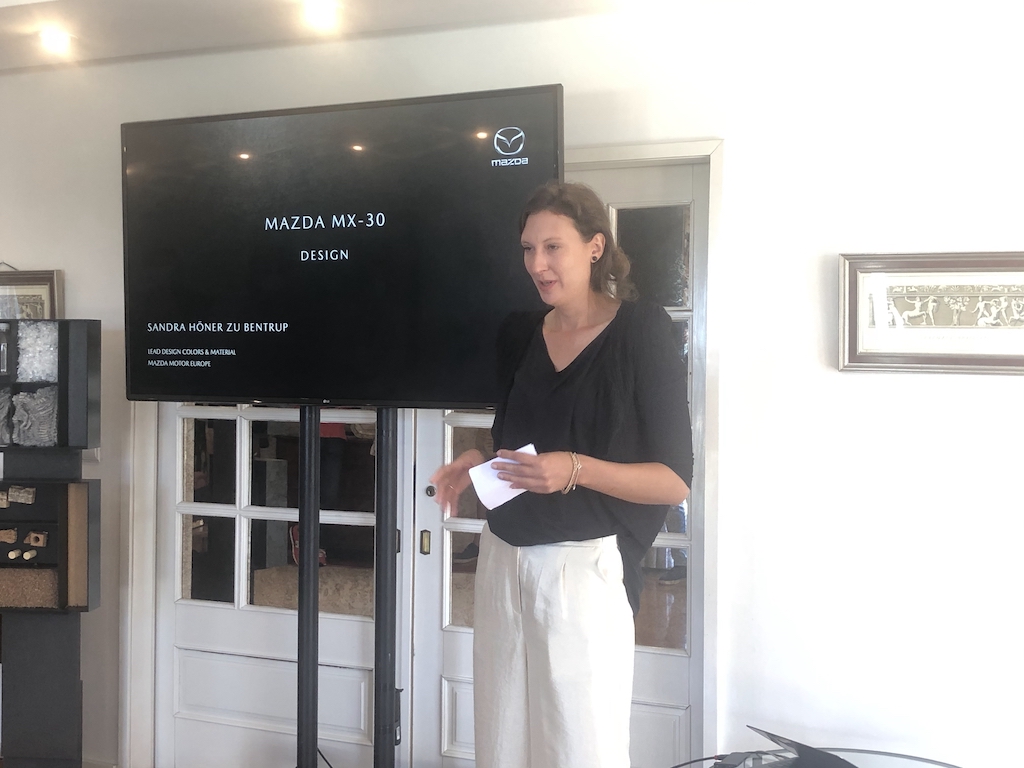
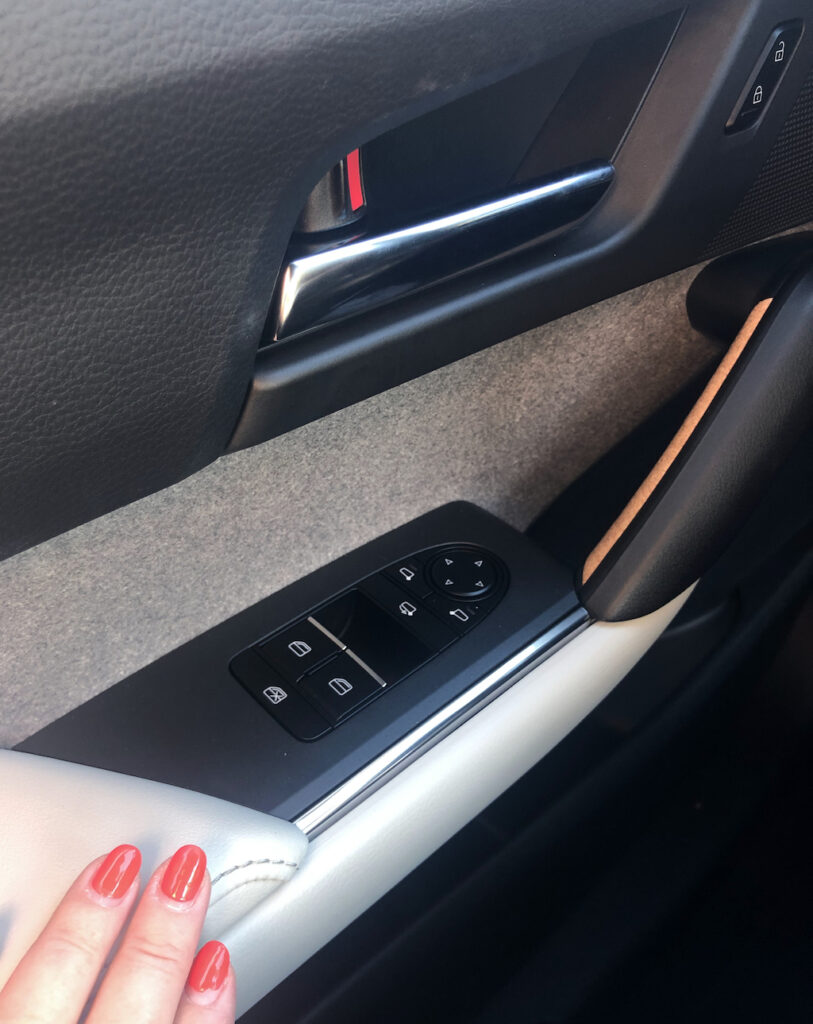
“But it’s not just the powertrain that makes the MX-30 the perfect representative of Mazda’s holistic and forward-looking sustainability strategy,” said Sandra Höner zu Bentrup, Senior Color and Material Designer at Mazda Research Europe (MRE). “The interior of the car also features several innovative, sustainable materials. The upper part of the doors is covered with a fabric recycled from PET bottles, which gives the impression of containing air and thus enhances the feeling of openness in the interior. Mazda also uses vegan leather. Matching the smooth, warm softness of quality leather is hard to achieve with synthetic materials; at the same time, the environmental impact of natural leather should not be underestimated. The new Premium Vintage Leatherette, a high-quality vegan leather alternative that compares well with genuine leather, solves this dilemma. Developed specifically for the Mazda MX-30, it features a vintage leather texture printed on a high-quality faux leather base. Thanks to the silicone coating, the material seems to have depth and feels pleasant. This artificial leather is manufactured with water instead of organic solvents, making it even less harmful to the environment. The most remarkable of our sustainable materials is undoubtedly cork. We have applied these in places where there is normally rubber, such as in the center console and the door handles of the car. Not only does this bring the visual warmth of nature into the car, it is pleasant to the touch and functional due to its lightness, elasticity and softness. Cork is not only renewable and recyclable, it can withstand the demands of everyday life. It is incredibly versatile, hypo-allergenic, absorbs vibrations, provides acoustic and thermal insulation and is practically impermeable to liquids and gases. Cork is a good example of sustainable materials that are becoming increasingly important, nowadays we come across this material in many places in interiors, lifestyle objects, fashion, …”
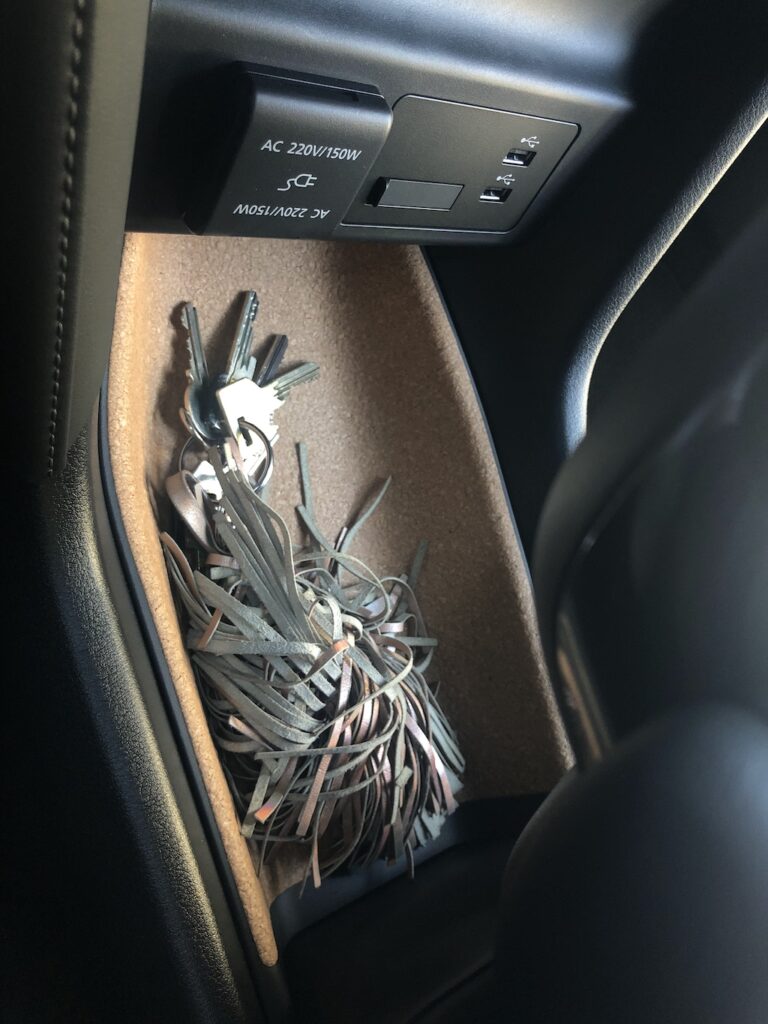
Mazda is the first automaker to use cork – a highly versatile and durable material – in the interior design of a mass-production vehicle.
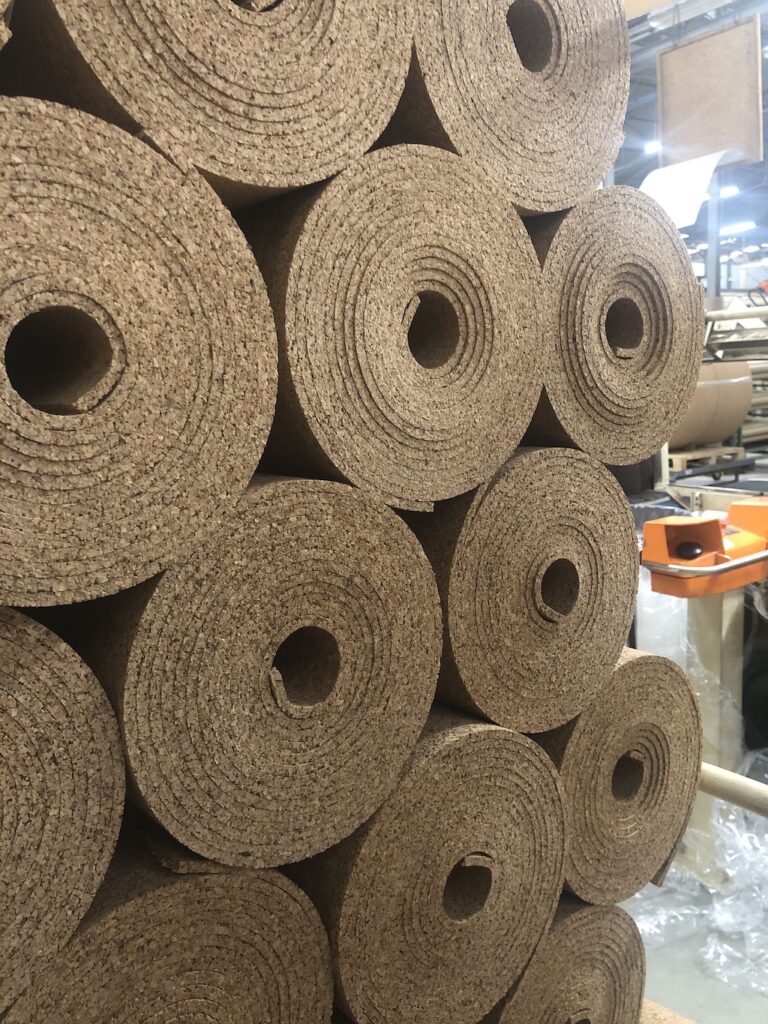
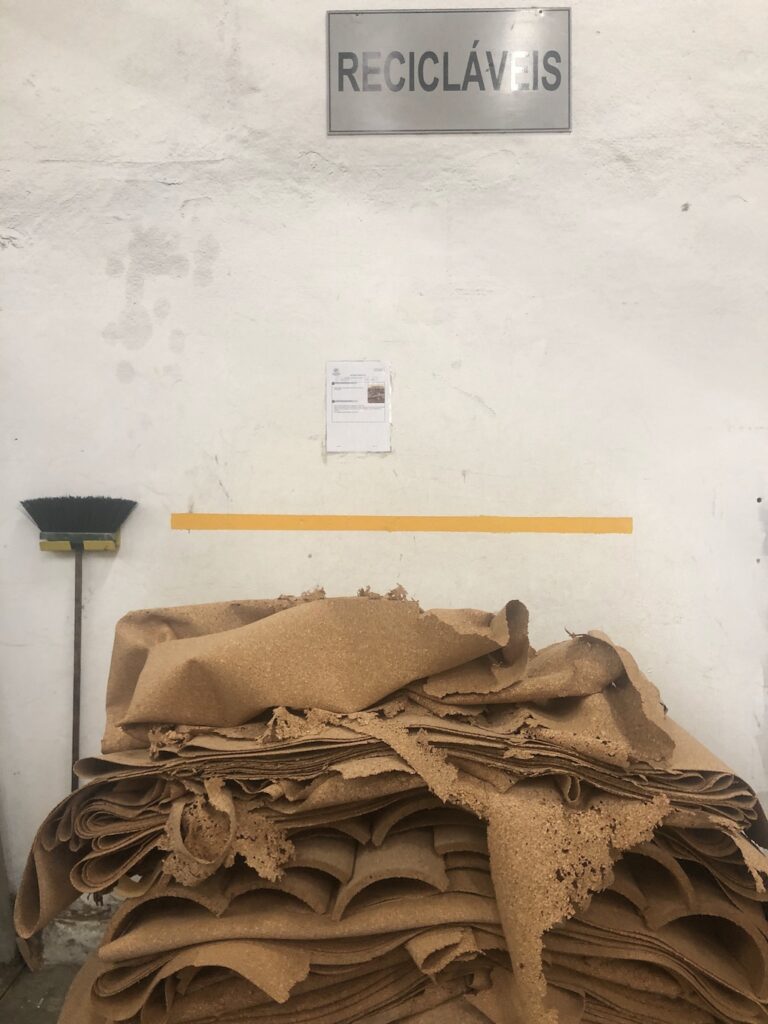
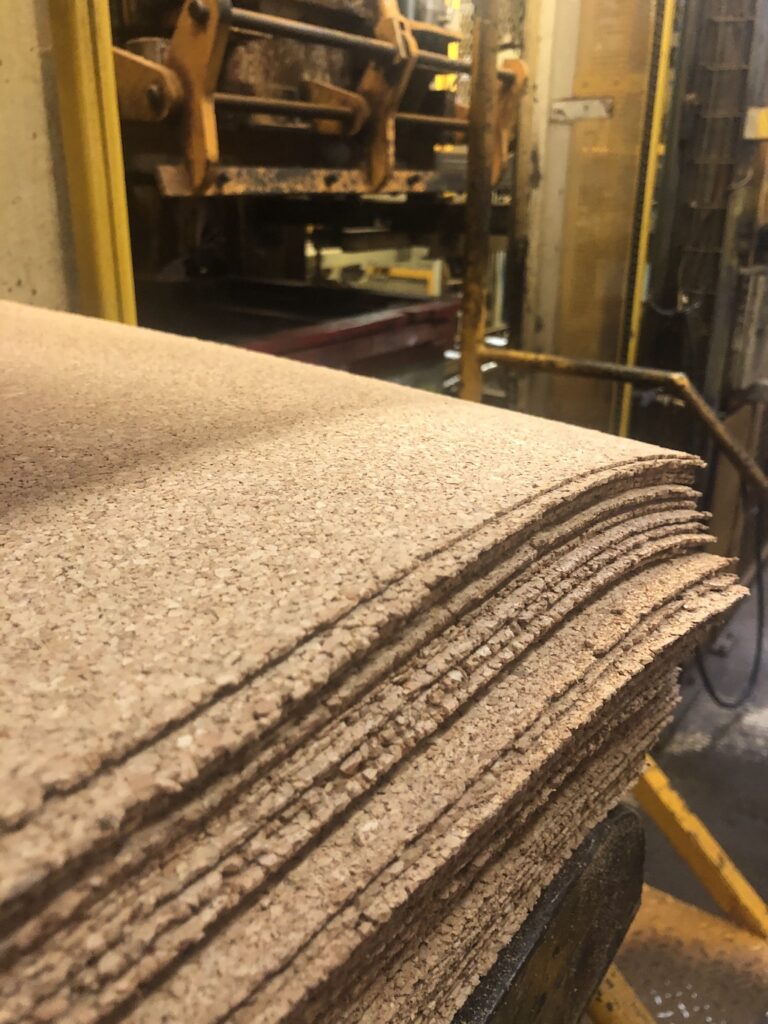
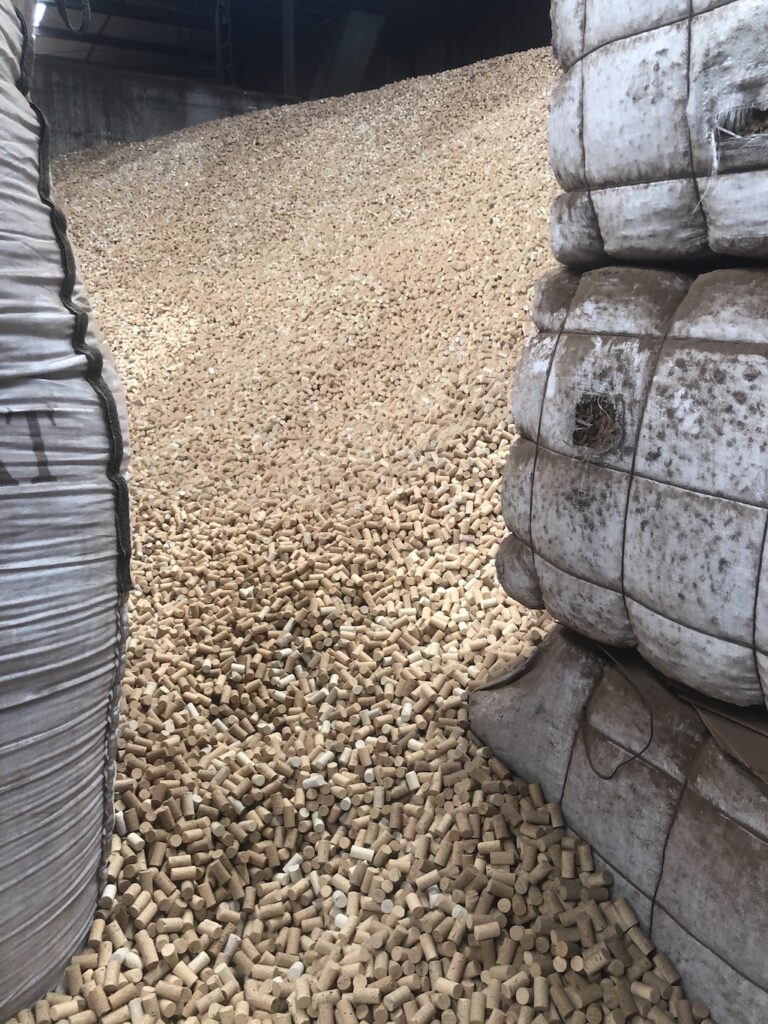
Mazda also takes the sustainability aspect of cork one step further: during the production process of cork stoppers at its supplier Corticeira Amorim, cork shavings and excess cork inevitably arise. It is this residual material that Mazda uses. Since the quality of cork improves with age, and corks require bark from trees over 40 years old, the cork used in the BEV is of exceptional quality. In addition, in order to meet the special requirements of an automotive environment in the Mazda MX-30, the raw material is subjected to extensive processing: cork granules of different sizes ensure that there are no holes in the material, and a high-quality coating and a special backing material make the cork durable enough to withstand the sometimes harsh conditions in a car cabin.

“We are constantly researching innovative materials that we can use in the automotive sector,” says Sandra. “Leather and its vegan alternatives are the hot topics we are currently working on, but we are also looking for more sustainable ways to produce and use real leather. Many studies and projects are currently underway to take artificial leather to a new level of quality and durability. Leather made from apples, grapes or even certain mushrooms could really revolutionize things. We are also experimenting with materials based on corn, pineapple, cactus, etc. For example, I really like these boxing gloves. Because they have to be able to take a beating, they are made of cactus leather, a material with a lot of potential. Cacti need little water and are interesting in that respect with regard to CO2 print. For the time being, studies on these materials are still ongoing, because even though we find them in lifestyle objects, they are not yet approved for the automotive sector or cannot be supplied in the volumes needed for the automotive sector. More than often, typically small companies come up with these innovative materials. A while ago, for example, I was introduced to mango leather by a small, Dutch start-up. Apparently many mangoes arrive in the port of Rotterdam that are no longer suitable for consumption as a result of the (long) transport. To prevent them from being thrown away, this start-up is turning them into a vegan alternative to leather. When it comes to real leather, two approaches are promising in my view. The first is the use of recycled leather. Under the right conditions, it is possible to retain many of the original characteristics of the material, even with the second or third use. The advantage of recycled leather is that you retain the odor aspect of leather. The second crucial aspect is the tanning process: usually leather is tanned with a chrome solution for convenience, but there are also many natural tanning methods that can achieve the same result. Tanning with olive leaves or rhubarb is not only more sustainable, but also more pleasant and healthier for the tanners themselves.”


Cork material of the future?
– Portugal is responsible for half of the total cork production worldwide. Spain comes in second with 35 percent. The rest is borne by a few North African countries.
– The cork for Mazda interiors comes from Corticeira Amorim, the largest cork processing group in the world. The family business – founded in 1870 – has more than 50 business units on five continents, nearly 4,500 employees and exports numerous products to more than 100 countries. Last year, the company was synonymous with a turnover of 800 million euros. 70% of that turnover is related to cork stoppers. Amorim produces 25 million cork stoppers per day. That’s 5.5 billion a year. Good for the environment because one natural cork stopper removes 400 grams of CO2 from the air.
– Cork comes from cork oaks. Unlike wood, cork producers simply strip the cork oaks of their bark, leaving the entire plant intact. The first harvest can only take place after 25 years, but that cork does not have the right characteristics to make cork stoppers. The tree can only be peeled off again after 9 years and only the third harvest has the right characteristics.
– Since it is not necessary to cut the trees to recover the cork, the forests of Amorim serve as carbon sinks all year round. In many ways, cork is naturally a low-impact material.
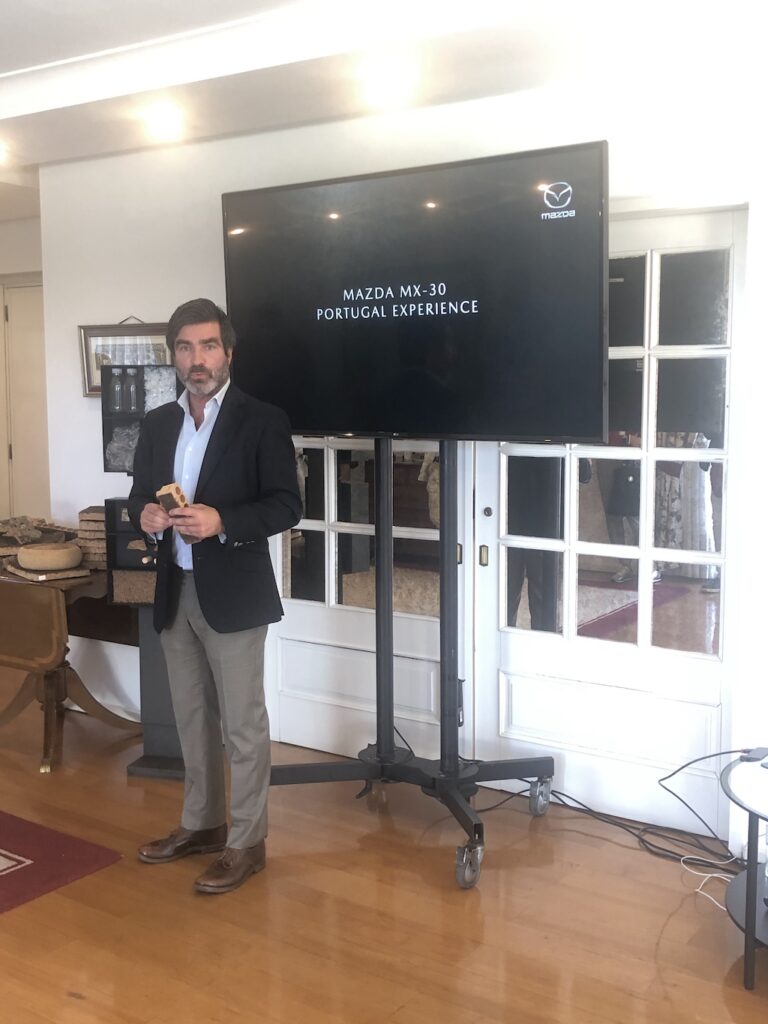
“Mazda is the only car brand in the world for which we supply cork on a large scale,” said Rafael Alves da Rocha, Head of Corporate Communication at Grupo Amori. “It is true that we are talking to other car brands as well as bus and train manufacturers. We also supplied cork for the electric Mini Strip, a one-off design study by fashion designer Paul Smith for Mini, which had to show that sustainability can also be fun. Cork has many positive properties. It is light which allows us to use it in the floors and side panels of vehicles and it also absorbs vibrations. Corticeira Amorim offers a range of solutions to some of the most technologically disruptive and demanding industries in the world. Think of aerospace (Nasa, Esa), … automotive industry, construction, sports, energy, interior design, … Amorim strives for zero waste. Cork that cannot be used in the production of products is ground to cork dust, which is then burned and used to generate the energy for the factory itself. About 70 percent of the total energy needs at Amorim are met in this way, boiling down to a cork utilization rate of 100 percent.
